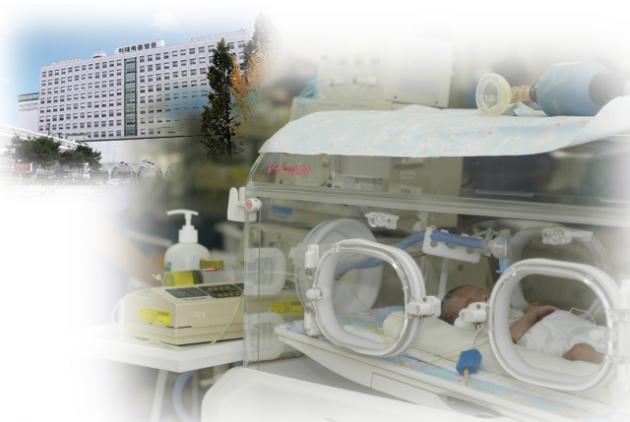The latest deaths of newborns at Ewha Womans University Medical Center’s neonatal intensive care unit revealed the dire state of NICUs in Korea.
Korean hospitals make more losses if they receive more patients in NICU. NICUs require strict infection management, but chronic shortages in medical staffs and a lack of the government's financial support make NICUs vulnerable to infection.
It was the same case with Ewha’s NICU. On Dec. 16 when the four newborns at the NICU died, only two nurses and one specialist had to take care of 16 babies at the NICU. Four days before the incident, on Dec. 12, five pediatrics doctors left the hospital collectively. Understaffed, the hospital had to bring in a sick professor in chemotherapy to support the NICU.
Experts say the incident at Ehwa hospital came out of an abnormal medical system of Korea. Reimbursements for medical service at NICUs are too low to cover the cost. With such reimbursement structure, NICUs cannot help but make losses, they say.

According to a report by Park Won-soon, a professor of pediatrics at Samsung Medical Center, submitted to the Ministry of Health and Welfare, four out of five hospitals were in serious deficits in running NICUs. Park analyzed the financial balance of the five hospitals for three months in 2013. The more medical care for serious patients such as extremely premature babies, the larger the deficit these NICUs suffered.
Hospital A, which has five professors, three clinical instructors, eight specialist physicians, and 65 nurses, made the loss of 511 million won ($477,274) in three months. Its loss rate was 21.6 percent. The hospital had 53 beds in the NICU.
Hospital B, which has a smaller NICU than Hospital A, was in deficit of 338 million won. Hospital C had a deficit of 65.1 million won, and Hospital D, 27.5 million won. Hospital E, which had the smallest NICU among the five, was the only one in the black, recording profits of 35 million won. Hospital E has two professors, four specialist physicians, 35 nurses, and a 30-bed NICU.
“NICUs in Korea have a structural problem where the more you provide medical service, the greater the deficit becomes. The government needs to increase health insurance reimbursements for high-risk newborns,” Park said.
As NICUs make losses, hospitals find it difficult to dispatch many medical workers. Consequently, NICUs are almost always understaffed.
Seoul National University Hospital’s study on the operation of NICUs, submitted to the health and welfare ministry, showed that the number of specialists at NICUs went down to 0.11 person per bed in 2015 from 0.12 in 2011. The number of nurses also declined to 1.04 from 1.18 over the cited period. In reality, doctors and nurses are burdened with more beds because they work in shifts.
Although the government’s support helped the number of beds in NICUs increase to 1,716 in 2015 from 1,299 in 2011, the number of specialists and nurses rose only slightly by 16-22 percent.
“Because NICUs require highly specialized doctors and labor-intensive work, they’re not getting as many human resources as they need. I’m worried that existing staffs might leave NICUs because of overwork and it will become more difficult to get new staffs,” said Kim Han-suk, a professor at SNUH’s pediatrics department, who led the study on NICUs.
Experts noted that unless Korea overcomes the structural problem in NICUs, another case of Ewha hospital incident can happen at any time.
“If any hospital official says the NICU problem is only confined to Ewha hospital, it must be an abominable lie,” said Eun Byung-wook, director of insurance and legislation affairs at Korean Society of Pediatric Infectious Diseases. “If any incident (like the latest one at Ewha) occurs, we can’t say there is no responsibility for individual patients. But structural problems are greater. If individual responsibility is ‘1,’ institutional responsibility is ‘99’.”
Related articles
- Police raid doctors’ homes involved in Ewha hospital incident
- Ministry lays out response to disaster at Ewha hospital
- 'Ewha hospital made illegal profit off injections given to 4 dead newborns’
- Newborns died of Citrobacter sepsis: police
- Infant deaths at Ewha hospital re-illuminate poor infection control

